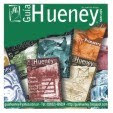Catalogue of San Luis Artists who registered at the Third Edition of Guía Hueney’s Independent Art Walk in Cuba.
Gustavo Caneda – Crafts (containers for appetizers, hangers, board for roast meat, wine barrels) – Potrero de los Funes
Ludmila Bedair – Crafts (Kaleidoscopes) – Potrero de los Funes
Ricardo Villanueva – Digital Art (filmmaking) - Potrero de los Funes
Blanca Rosa Sosa – French Art (laminated photography, silicone, varnish) – San Luis
Jorge Raúl Saibene – Sculpture (sculpture in calden wood) – Villa Mercedes
José de Cristófano – Sculpture (sculpture in guatambú, oak and palo blanco wood) – San Luis
Juanjo Becerrra – Sculpture (alpaca, silver, old cutlery, leather, coins, bronze) – Villa Mercedes
Lilian Perroni – Sculpture (wood, plaster cast, acrylic, oil painting, papier-mâché) – San Luis
Alexandra Rubiño – Sculpture and drawing (concrete, canvas, clay, iron, recycled materials) – Juana Koslay
Olemberg family – Sculpture and music (making of musical instruments – spinning and knitting with human hair) – La Toma
Osvaldo Aguilera - Sculpture and music (carving and engraving with flagstone – guitar player and folk singer) – San Luis
Tita Alonso - Sculpture and painting (stone, acrylic, aerosol, paraffin, dried seeds, plaster cast, glass, recycled material) – San Luis
Sandra and Matías Molina – Dancing/ Tango (shows and classes) – San Luis
Franco Siracusa – Photography (film and digital photography – graphics - hand processing of films) – Villa Mercedes
Luis Miranda – Photography and drawing (landscape digital photography without retouching) – Potrero de los Funes
Paola Irastorza – Photography and literature (digital photography, design, art, communication, and education) – Potrero de los Funes
Nélida Olguín F. – Photography and painting - San Luis
Dolores Valentino – Literature – Juana Koslay
Myriam Olga Mrercau – Literature – Juana Koslay
Rodolfo Otoniel Molina – Potrero de los Funes
Favio Violante – Silversmithing/goldsmithing – Juana Koslay
Adriana Toledo – Painting – Potrero de los Funes
Adriana Giuliani – Painting – Juana Koslay
Cecilia Adriana Gatica – Painting – San Luis
Flora Isabel García – Painting – Villa Mercedes
Gastón López Alcaraz – Painting - San Luis
Graciela Imperinato -Painting – San Luis
Marita Uvilla -Painting and sculpture – San Luis
Carina Levin – Painting and photography – Potrero de los Funes
M. Iglesias Dávila – Painting and Photography – San Luis
Dido – Painting and murals – Juana Koslay






